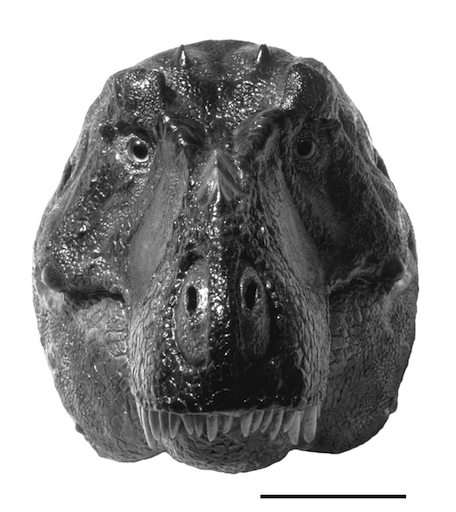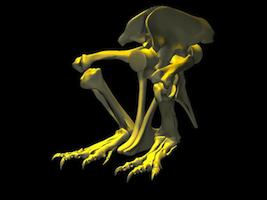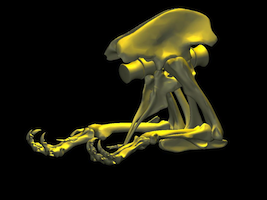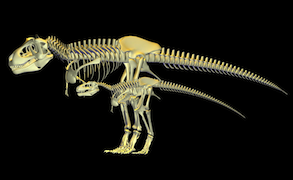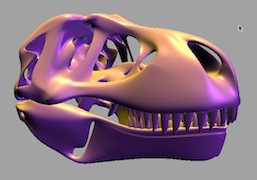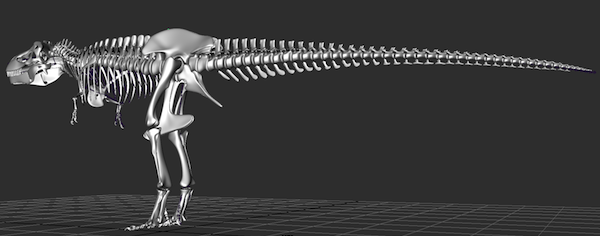Tyrannosaurus rex is often distinguished from other theropod dinosaurs as having had "binocular vision" (a perceptual capability sometimes oversimplified to be either present or absent). Moreover, binocular vision is often assumed to provide the ability to "see in depth".
As I have studied human visual perception, and in particular this notion of "seeing in depth", I was drawn towards applying what we know about binocular vision in extant reptiles and birds towards several theropod taxa, including T. rex. You can read more about the results here.
